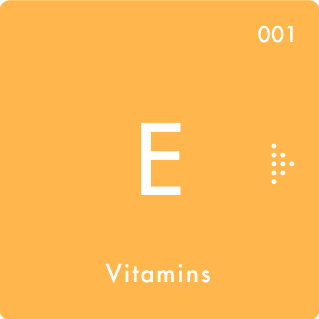
Health functions
The main function of vitamin E (alpha-tocopherol) in humans appears to be that of an antioxidant. Read More

The term vitamin E covers eight related fat-soluble compounds found in nature: four tocopherols (alpha-, beta-, gamma-, and delta-) and four tocotrienols (alpha-, beta-, gamma-, and delta-). In humans, only alpha-tocopherol is specifically selected and enriched by the liver and is therefore the most abundant in the human body (1). The other vitamin E forms are rapidly metabolized and are present at much lower concentrations. Therefore, the Food and Nutrition Board recommended in 2000 to establish recommended intakes of vitamin E based on alpha-tocopherol (2).
The form of alpha-tocopherol found in plants is RRR-alpha-tocopherol (also referred to as natural or d-alpha-tocopherol). The vitamin E form mainly used in fortified foods and dietary supplements is all-rac-alpha-tocopherol (synthetic or dl-alpha-tocopherol). It contains RRR-alpha-tocopherol and seven highly similar alpha-tocopherol forms. All-rac-alpha-tocopherol is defined to be slightly less biologically active than RRR-alpha-tocopherol; a revision of this definition is currently being discussed.
Vitamin E deficiency does not manifest itself as prominently as ‘scurvy’ (vitamin C deficiency) or ‘rickets’ (vitamin D deficiency). However, rare inherited disorders that result in vitamin E deficiency have been described. Untreated, these disorders can lead to nerve damage, muscle weakness, loss of ability to walk or blindness. Low blood α-tocopherol levels have been associated with increased risk of mild cognitive impairment and Alzheimer’s disease (85).
Authored by Dr Peter Engel in 2010, reviewed and updated by Dr Szabolcs Peter on 18.06.2017

The main function of vitamin E (alpha-tocopherol) in humans appears to be that of an antioxidant. Read More

Results of at least five large observational studies suggest that increased vitamin E consumption is associated with decreased risk of heart attack (‘myocardial infarction’) or death from heart disease in both men and women. Read More
Things to know about Vitamin E
Results of clinical trials using vitamin E for the treatment of heart disease have been inconsistent. Read More
The major problem in making recommendations for vitamin E is the dependence on the polyunsaturated fatty acid (PUFA) intake. Read More
According to data from various surveys, mean vitamin E intakes in Europe are between 7 and 15 mg alpha-tocopherol per day (62). Read More
Symptoms of severe vitamin E deficiency include impaired balance and coordination, injury to sensory nerves, muscle weakness, and damage to the retina of the eye. Read More